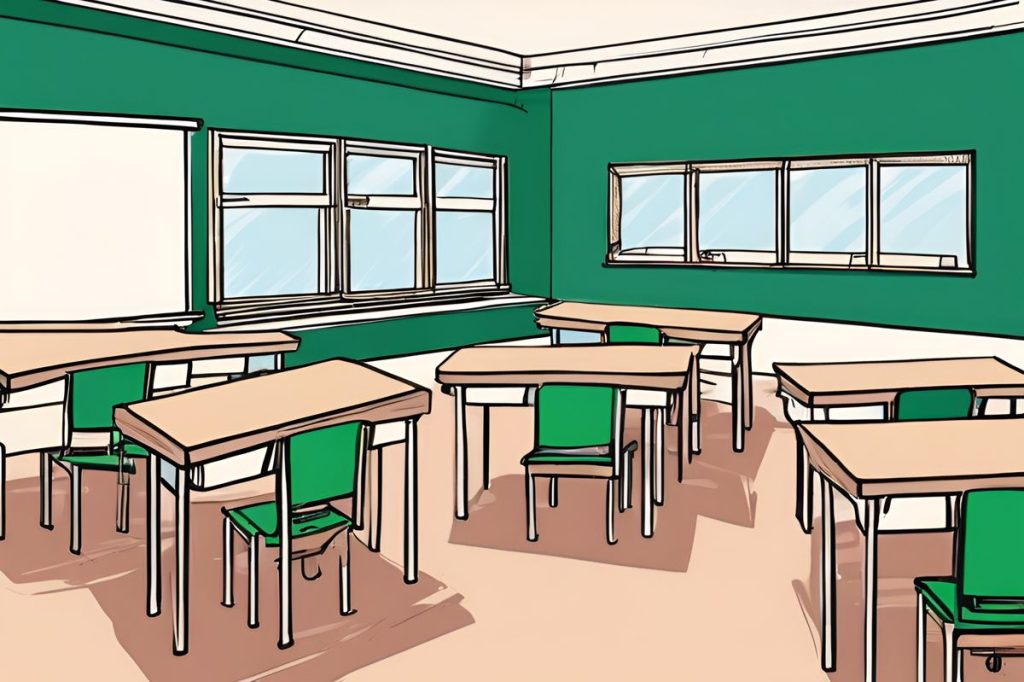The absence of air-conditioning units in schools has sparked a heated debate, as concerns about students’ comfort and health clash with the financial implications of installation and operation. With the Education Minister promising to equip all classrooms within three years, the challenge lies in balancing the urgency of the situation with the practicality of upgrading electrical infrastructure and managing the costs involved.
Why is air-conditioning in schools a contentious issue?
Air-conditioning in schools has become a contentious issue due to its impact on students’ comfort and ability to learn, especially during high temperatures. Concerns include health effects like dizziness and nosebleeds. The debate centers on balancing the cost of installation and operation against the need for conducive learning environments, considering infrastructural challenges and responsible fiscal management.
The Debate Over Comfort and Education
In recent days, a contentious issue has risen to the forefront of public discourse: the absence of air-conditioning units in classrooms. With a wave of high temperatures, the situation has escalated dramatically. The primary teachers’ union chief voiced concerns, noting the adverse effects on students, including dizziness and nosebleeds. It’s clear that the comfort of students cannot be sidelined when discussing their educational environment.
The pressing demand for immediate installation of AC units has been met with various responses. Parents’ associations are threatening action, and with schools closing for summer recess, the concern has only intensified. The government made a temporary concession by ending classes earlier on a particularly scorching Friday, but this is a mere stopgap to a much larger issue that demands a long-term solution.
Infrastructure and Investment
Tensions rose when it was revealed that while some schools had received air-conditioning units, they lay dormant due to inadequate electrical infrastructure. Upgrading these systems becomes a complex task, compounding the overall challenge and raising questions about the feasibility of such an undertaking within the proposed timeframe.
Athena Michaelidou, the Education Minister, assured the public that the installation of AC units in all classrooms would be completed within the next three years. However, this timeline seems ambitious, considering the need to enhance the electrical capacity of many school buildings and the rigorous safety standards that must be met.
Economic Implications and Prioritization
The debate extends beyond logistics and into the realm of fiscal responsibility. The installation and operation of air-conditioning units would not only require a significant upfront investment but also lead to increased electricity costs for each school. This raises a critical question: should government funds be allocated to improving the air quality in schools, or should the focus remain on enhancing educational standards?
As it stands, schools typically close during the peak heat of summer, which means the absence of AC units mainly affects the transitional weeks of June and September. Historically, this may have influenced the lack of urgency in addressing the issue. Nonetheless, if the collective voice of parents and teachers is heeded, it may result in taxpayers shouldering the cost for a more comfortable learning environment.
A Balancing Act
The situation is a complex balancing act between ensuring optimal learning conditions and maintaining responsible stewardship of educational funds. While it’s evident that student well-being is paramount, the dilemma revolves around finding the most effective way to support both their physical comfort and academic advancement. The solution requires a thoughtful approach that takes into account the immediate needs of students, the practicality of implementing widespread infrastructural changes, and the careful allocation of educational resources.
Why is air-conditioning in schools a contentious issue?
Air-conditioning in schools has become a contentious issue due to its impact on students’ comfort and ability to learn, especially during high temperatures. Concerns include health effects like dizziness and nosebleeds. The debate centers on balancing the cost of installation and operation against the need for conducive learning environments, considering infrastructural challenges and responsible fiscal management.
What are some of the challenges associated with installing air-conditioning units in schools?
One of the main challenges associated with installing air-conditioning units in schools is the need to upgrade electrical infrastructure to support the additional load. This can be a complex and costly task, especially in older school buildings. Additionally, there are concerns about the ongoing operational costs of running air-conditioning units, as this could lead to increased electricity bills for schools.
How is the government planning to address the issue of air-conditioning in schools?
The Education Minister has promised to equip all classrooms with air-conditioning units within the next three years. However, this timeline may be ambitious considering the need for electrical upgrades and meeting safety standards. The government will need to carefully prioritize and allocate funds to ensure that the installation of air-conditioning units is feasible and sustainable in the long term.
What are some of the economic implications of installing air-conditioning units in schools?
Installing air-conditioning units in schools would require a significant upfront investment and could lead to increased electricity costs for each school. This raises questions about how government funds should be allocated and whether the focus should be on improving air quality or enhancing educational standards. The decision will require a delicate balance between providing a comfortable learning environment for students and managing educational resources responsibly.

